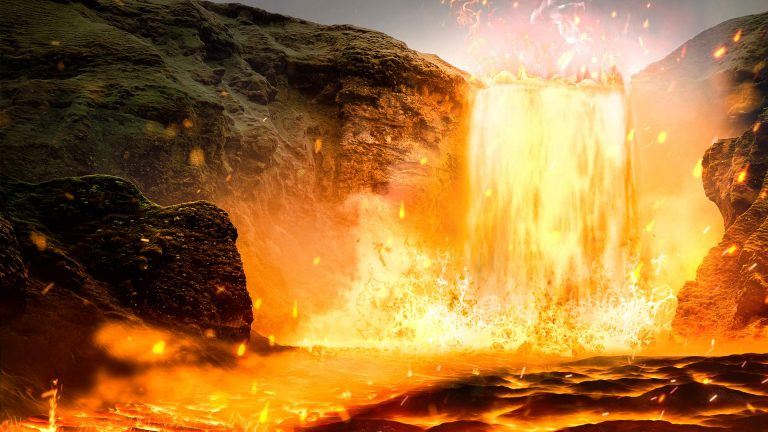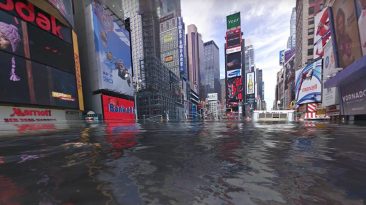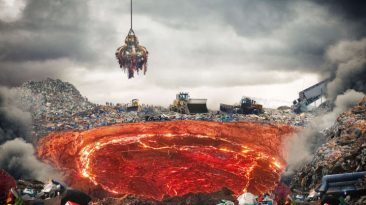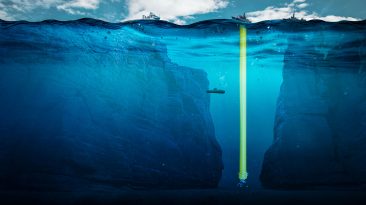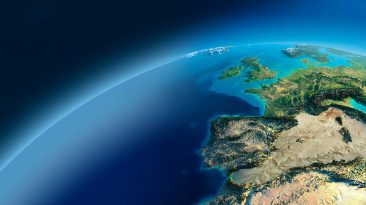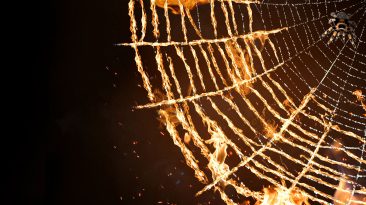How long would something like this take? Why would this change the weather? And how hot would Earth get?
If you think something like this is impossible because we don’t have enough lava in the world, think again. There’s enough magma in the Earth’s mantle to fill our ocean 650 times. But this process wouldn’t be overnight. So how long would it take?
Well this would be a slow process.If we erupted all volcanoes at once to fill up our oceans entirely with lava, that process would take over 32,000 years. But that doesn’t mean the fun wouldn’t begin right away.
As soon as lava started to reach the ocean, it would react with the water, creating a lava haze. These plumes of smoke come when lava connects with water. And they’re comprised of hydrochloric acid gas, steam as well as tiny volcanic particles. So, in short, this is something you don’t want anywhere near you.
If you do come in contact with this smoke, it can cause lung, eye, and skin irritation. And usually, when smoke like this does happen, it’s in a small contained area. So humans could evacuate to someplace safer.
But in our scenario, these lava plumes would be everywhere. It would practically be impossible to escape. Not only that, but the wind would also carry the smoke, further
spreading it around the world. But that’s just what humans would experience. What about all the ocean wildlife? Well, unfortunately for them, anything inside the oceans would be boiled alive.
This would also be a problem for humans as 3.5 billion depend on the ocean as their primary source of food. As the wildlife died, the water in the ocean would boil and
evaporate. Even more greenhouse gases and fumes would be released into the atmosphere.
As the oceans continued to fill, all the increased smoke and fog would reduce the amount of sunlight that reaches the planet.This would cause plants and crops to completely die out.
And now that the ocean is full of lava, the Earth would be incredibly hot. For reference, lava can be as hot as 1,200 °C (2,200 °F). And the heat it radiates is scorching as well.
People flying above pools of lava from hundreds of feet in the air have reported feeling immense heat. So if lava covered 70% of the Earth’s surface, the temperature would be thousands of degrees and would instantly cook you to a crisp. If you somehow managed to survive this, well, good luck with the Earth’s new weather system.
That’s because the heat from the lava would mix with cooler air inland. And this would create a fire cloud that would produce violent lightning storms and generate extreme winds. To get a better sense of what might happen, we can look to the past. Billions of years ago, Earth looked quite a bit like this. It was full of lava and had no way of supporting life.
But as hundreds of millions of years passed, the lava cooled and solidified. Earth could now harbor life. And that’s what would happen in our scenario. Hundreds of millions of years would pass, and the lava would eventually cool down enough for the planet to be inhabitable again.
Sources
- “5 Differences Between Lava And Magma – Differencecamp”. 2017. Differencecamp.
- ” What is lava made of? “. 2021. volcano.oregonstate.edu.
- “What is ‘laze’? Toxic gas plume created by Hawaii volcano”. 2018. NBC News.
- “What is lava haze and why is it so dangerous?”. Melissa, Griffin. ABC News.
- “How Large Are The World’s Oceans?”. 2017. mentalfloss.com.
- “5 Major Ocean Basins – Characteristics – Uses”. deepoceanfacts.com


